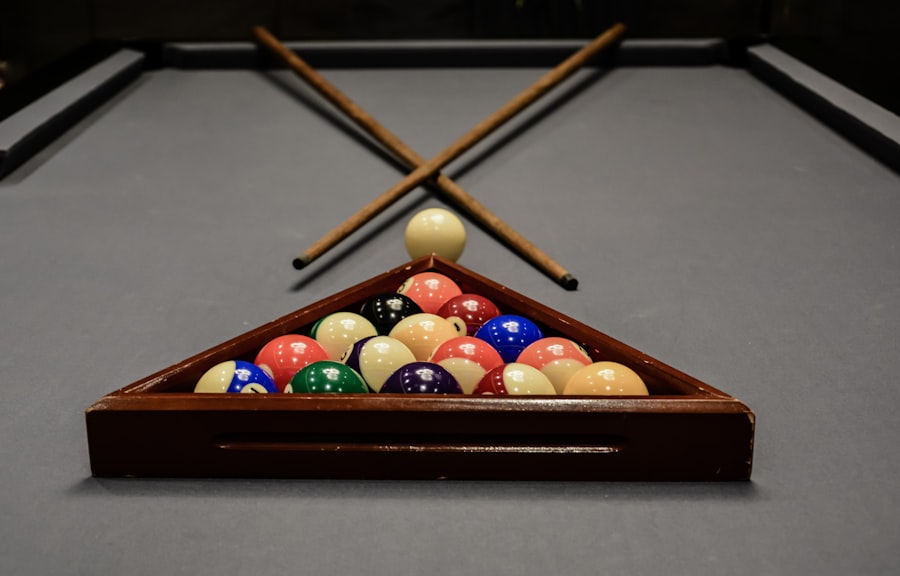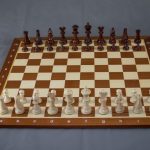Download links
How to install Master the Snake 8 Ball Pool: Tips and Tricks APK?
1. Tap the downloaded Master the Snake 8 Ball Pool: Tips and Tricks APK file.
2. Touch install.
3. Follow the steps on the screen.
Description
8 Ball Pool is a classic billiards game that has captivated players for generations. The game is played on a rectangular table with six pockets, using a cue ball and a set of 15 colored balls, which are divided into two groups: solids (1-7) and stripes (9-15). The objective is straightforward: one player must pocket all of their designated balls—either solids or stripes—before sinking the 8 ball to win the game.
The game begins with a break shot, where the player strikes the cue ball to scatter the racked balls, ideally aiming to pocket one or more in the process. Understanding the rules is crucial for any aspiring player. The game starts with the cue ball placed behind the head string, and the player must strike the racked balls from the opposite end of the table.
If a player pockets a ball during their turn, they continue to shoot until they miss or commit a foul. A foul can occur in various ways, such as failing to hit one of your own balls first or not sending any balls to a pocket. Players must also be aware of the concept of “called shots,” where they must declare their intended ball and pocket before taking their shot.
This adds an additional layer of strategy and skill to the game.
Key Takeaways
- Understanding the basics of 8 Ball Pool is essential for beginners to grasp the rules and mechanics of the game.
- Perfecting your aim and cue control is crucial for consistently potting balls and setting up for the next shot.
- Mastering spin and English on the cue ball can give you an edge in controlling the path of the cue ball and positioning for the next shot.
- Developing a solid break strategy is important for gaining an advantage at the start of the game and setting up for a successful run.
- Learning advanced shot selection and positioning is key for taking your game to the next level and setting up for game-winning opportunities.
- Utilizing defensive strategies to control the game can help you dictate the pace and force your opponent into difficult positions.
- Managing your emotions and mental game is crucial for maintaining focus and composure, especially during high-pressure situations.
- Practicing and improving your skills through consistent play and drills is essential for honing your abilities and becoming a better player.
Perfecting Your Aim and Cue Control
Aiming is one of the most critical skills in 8 Ball Pool, as it directly influences your ability to pocket balls consistently. To improve your aim, players should focus on establishing a reliable pre-shot routine. This routine often includes visualizing the shot, aligning the cue stick with the intended path of the cue ball, and taking practice strokes to gauge the necessary power and angle.
Many players find it helpful to use a system of reference points on the table, such as aiming at specific diamonds or markings on the cloth, to enhance their accuracy. Cue control is equally important, as it determines how the cue ball behaves after making contact with an object ball. Players should practice different stroke techniques to develop a feel for how much force to apply and how to manipulate the cue ball’s spin.
A smooth, consistent stroke is essential for maintaining control over both the cue ball and the object balls. Practicing various shot types—such as straight shots, cut shots, and bank shots—will help players gain confidence in their ability to control the cue ball’s trajectory and speed.
Mastering Spin and English on the Cue Ball

Spin, often referred to as “English,” is a vital aspect of advanced 8 Ball Pool play that can significantly affect shot outcomes. By applying spin to the cue ball, players can alter its path after contact with an object ball, allowing for more complex shot strategies. There are three primary types of spin: topspin, backspin, and side spin.
Topspin causes the cue ball to roll forward after contact, while backspin makes it reverse direction. Side spin can be applied to either side of the cue ball, affecting its angle after hitting an object ball or cushion.
For instance, applying topspin can help players navigate around obstacles or position themselves for subsequent shots. Conversely, backspin can be used to pull the cue ball back after pocketing an object ball, setting up for an easier next shot.
Understanding how different spins interact with various surfaces on the table is crucial; for example, side spin can cause a cue ball to curve slightly when it contacts an object ball at an angle. Regular practice with these techniques will enhance a player’s ability to control the cue ball’s movement and improve overall shot-making.
Developing a Solid Break Strategy
| Break Strategy Metrics | Value |
|---|---|
| Break Success Rate | 75% |
| Break Efficiency | 80% |
| Break Point Conversion | 70% |
| Break Opportunities Created | 20 |
The break shot is one of the most critical moments in an 8 Ball Pool game, as it sets the tone for the entire match. A well-executed break can lead to an advantageous position by allowing players to pocket balls and establish control early on. To develop an effective break strategy, players should focus on several key elements: stance, grip, and follow-through.
A solid stance provides stability and balance during the break, while a firm grip ensures that power is transferred effectively from the body through the cue stick. Players should also experiment with different break techniques to find what works best for them. Some players prefer a powerful break that aims to scatter balls widely across the table, while others may opt for a more controlled approach that focuses on pocketing specific balls.
Additionally, understanding how to position the cue ball for optimal contact with the racked balls is essential; many players find success by placing the cue ball slightly off-center or using specific angles to maximize their chances of pocketing balls during the break.
Learning Advanced Shot Selection and Positioning
As players progress in their 8 Ball Pool journey, shot selection becomes increasingly important. Advanced players must learn to evaluate each shot’s potential outcomes and choose wisely based on their current position on the table. This involves not only considering which balls are available but also assessing how each shot will affect subsequent opportunities.
For instance, a player may choose to take a more challenging shot if it allows them to position themselves favorably for their next turn. Positioning is closely tied to shot selection; players must think several steps ahead to ensure they leave themselves with good options after each shot. This often requires an understanding of angles and how balls will react after being struck.
Players should practice visualizing potential paths for both the cue ball and object balls after contact, allowing them to make informed decisions about which shots to take. Developing this foresight can significantly enhance a player’s strategic approach and overall effectiveness during matches.
Utilizing Defensive Strategies to Control the Game

While pocketing balls is essential in 8 Ball Pool, defensive strategies play a crucial role in controlling the flow of the game. Players must recognize when it is advantageous to play defensively rather than aggressively pursuing shots. A well-executed defensive shot can leave an opponent in a difficult position, forcing them into challenging shots or even fouls.
This aspect of gameplay requires keen observation and strategic thinking.
Another effective strategy involves playing safe by leaving the cue ball in a position that makes it difficult for the opponent to execute their next shot effectively.
Players should also be aware of when to switch between offensive and defensive play; sometimes, playing conservatively can create opportunities for future turns while minimizing risk.
Managing Your Emotions and Mental Game
The mental aspect of 8 Ball Pool is often overlooked but is just as important as technical skills. Players must learn to manage their emotions during matches, as frustration or anxiety can lead to poor decision-making and execution. Developing mental resilience involves practicing mindfulness techniques that help maintain focus and composure under pressure.
Visualization exercises can also be beneficial; imagining successful shots before executing them can boost confidence and reduce performance anxiety. Additionally, players should cultivate a positive mindset by setting realistic goals for improvement rather than fixating solely on winning or losing. Embracing mistakes as learning opportunities rather than setbacks can foster growth and enhance overall enjoyment of the game.
Keeping a level head during matches allows players to make better decisions and maintain control over their performance.
Practicing and Improving Your Skills
Consistent practice is essential for anyone looking to improve their 8 Ball Pool skills. Players should dedicate time each week to work on various aspects of their game, including aiming, cue control, spin techniques, and shot selection. Structured practice sessions that focus on specific skills can yield significant improvements over time.
For example, setting up drills that emphasize breaking techniques or practicing specific shot types can help reinforce muscle memory and build confidence. In addition to solo practice, playing against opponents of varying skill levels can provide valuable experience and insight into different playing styles. Observing how others approach challenges on the table can inspire new strategies and techniques that players can incorporate into their own game.
Joining local leagues or participating in tournaments can also offer opportunities for growth while fostering a sense of community among fellow enthusiasts. By dedicating time and effort to mastering these elements of 8 Ball Pool—ranging from fundamental skills like aiming and cue control to advanced strategies involving shot selection and mental resilience—players can elevate their game significantly over time. The journey toward becoming a proficient player is ongoing; each match presents new challenges and opportunities for growth that contribute to a deeper understanding of this timeless sport.
FAQs
What is Snake 8 Ball Pool?
Snake 8 Ball Pool is a popular online multiplayer game that combines the classic game of 8 ball pool with the concept of the snake game. Players control a snake-like line and try to collect balls on the game board while avoiding collisions with other players’ lines.
How do you play Snake 8 Ball Pool?
To play Snake 8 Ball Pool, players use the arrow keys on their keyboard to control the direction of their snake-like line. The goal is to collect as many balls as possible while avoiding collisions with other players’ lines. The game ends when a player’s line collides with either another player’s line or the game board’s boundaries.
Is Snake 8 Ball Pool free to play?
Yes, Snake 8 Ball Pool is free to play. Players can access the game through various online gaming platforms and do not need to pay any fees to play.
Can I play Snake 8 Ball Pool on my mobile device?
Yes, Snake 8 Ball Pool is available for mobile devices. Players can download the game from app stores and play it on their smartphones or tablets.
Are there any in-game purchases in Snake 8 Ball Pool?
Some versions of Snake 8 Ball Pool may offer in-game purchases for additional features or customization options. However, the core gameplay is typically free, and in-game purchases are optional.





